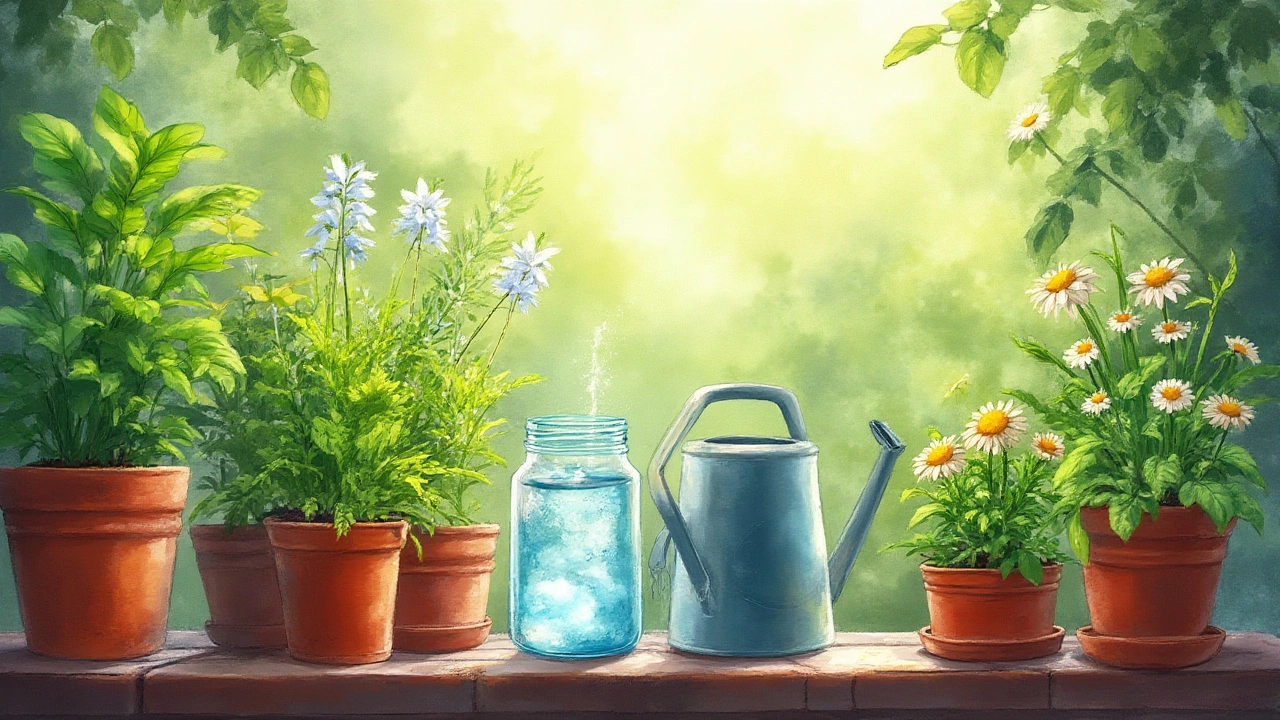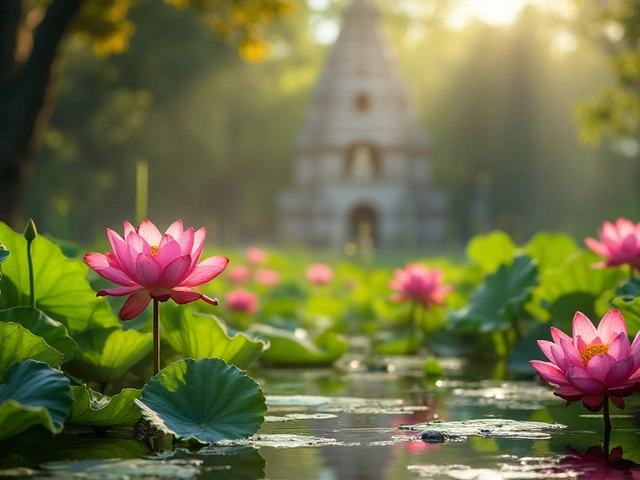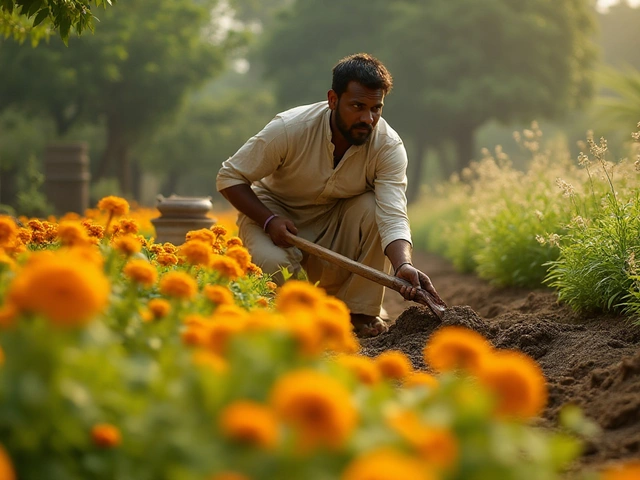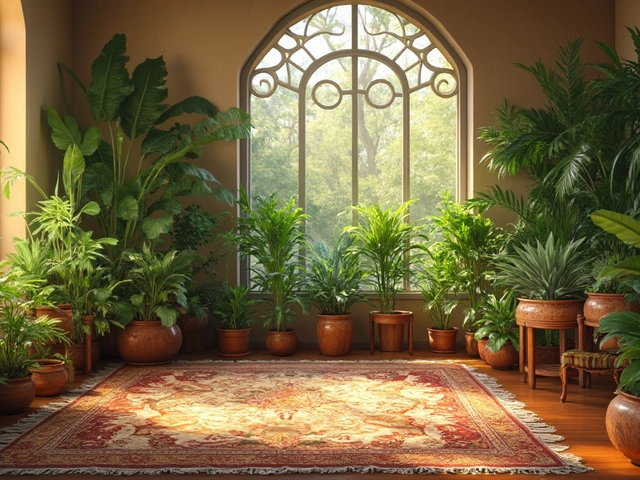Ever wonder why your ferns, pothos, or orchids sometimes look sad even though you water them right on schedule? The culprit could be hiding in your tap water. Most city water isn’t straight from a crystal-clear mountain spring; it’s treated to be safe for drinking, which doesn’t always mean it’s ideal for plants. You’ve probably heard folks say you should let water 'sit out' before using it, but is this actually helpful, or just one of those gardening myths that refuse to die? Let’s pull back the curtain on what’s really in your tap water, why letting it sit might make a difference, and how much time you actually need to invest in this simple trick.
What’s Really in Tap Water?
You can’t see it, but tap water often comes with a side order of chlorine, sometimes chloramine, trace minerals, and even a hook of dissolved metals like copper or lead if you’ve got older pipes. Each of these extras has its own story. Cities add chlorine or chloramine to kill bacteria, making the water safe for us but not always for plants, especially sensitive ones. Chlorine evaporates pretty quickly if you let water stand, but chloramine sticks around much longer. Hardness—mainly calcium and magnesium—can also pile up in potted plants, leaving those crusty edges on your pot or strange yellowing on leaves. If your city publishes a water quality report (which it probably does every year), take a peek; it’ll tell you exactly what you might be pouring onto your philodendron every week.
It gets even trickier if you’re using water softened by a home system. Those often replace calcium with sodium, and while your heart appreciates the sodium being low, your spider plant definitely doesn’t. Sodium can build up in the soil, mess with nutrient uptake, and make leaves brown at the tips. Then there’s iron: at trace levels, it helps, but too much can turn your watering routine into a slow choke for your plant. For those with wells or rural water supplies, watch for fluoride and nitrates—common in agricultural areas and not friendly to everything green indoors.
If you want a quick chemistry test, fill a glass with your tap water and smell it; a bleachy whiff usually points to chlorine. Sometimes, the smell is nothing, but the water’s still carrying stuff that could make your plant wilt. Different species have different thresholds, too. Dracaenas, palms, and peace lilies are notoriously fussy about fluoride and chlorine, while pothos and monsteras seem to handle whatever’s thrown at them. So, what’s the deal with letting water sit?
How Letting Tap Water Sit Can Help
The popular wisdom is to let your tap water sit out for a while before watering your leafy friends. But what’s happening in that pitcher on your countertop? For regular old chlorine, sitting water in an open container lets it off-gas from the surface into the air. Studies from horticulture departments, like those at the University of Florida and Colorado State, say most chlorine evaporates within 24 hours at room temperature—but sometimes it’s gone even sooner, depending on how much your city uses and how warm your house is.
Chloramine, though, is a different beast. It’s a combo of chlorine and ammonia, used by more water utilities these days because it hangs around longer in the pipes (so you don’t get a bacteria surprise in your glass). The bad news? It does not evaporate from standing water. Letting the water sit for a day or two won’t do much to reduce chloramine. If you know your water has chloramine, letting it stand is basically pointless for that specific chemical. If you’re not sure, check your city’s annual water quality report, or call customer service—they’ll probably tell you right away. If you have a fish tank, you might already be familiar with special dechlorinator drops that 'neutralize' chloramine. The same trick works for watering plants, just at half or quarter-dose to avoid overdoing it.
Letting the tap water sit doesn’t really do anything about dissolved minerals like calcium, magnesium, sodium, or lead. Those don’t just waft into the air with time. The same goes for fluoride, which can accumulate on the leaves of plants like spider plants and tip them brown. In some places, letting water sit might let tiny particulates settle to the bottom, letting you pour off the 'cleaner' top portion for your watering can, but that’s a minor improvement, not a fix-all.
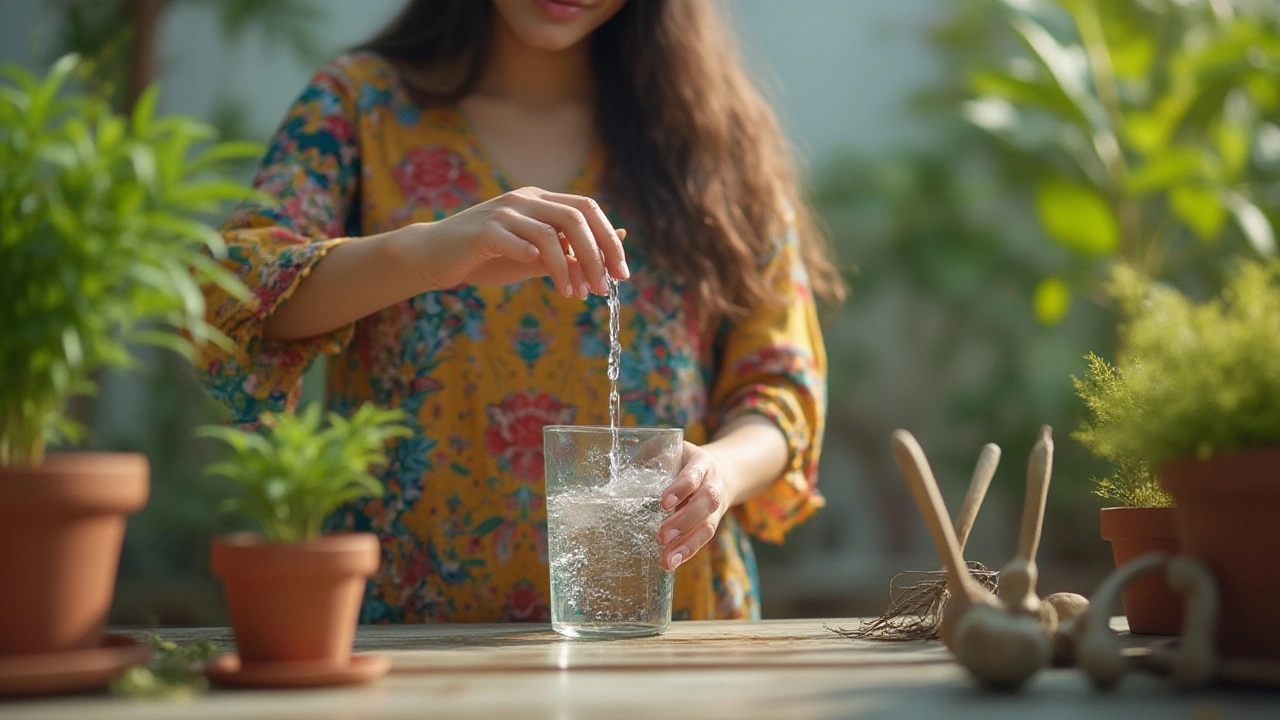
The Perfect Timing: How Long is Long Enough?
This is where the debate gets heated on gardening forums. Old-school advice says leave tap water out overnight, or up to 24 hours, uncovered. This usually gets rid of almost all the chlorine, especially in warmer homes. University tests show that roughly 70% of chlorine is gone after just 6-8 hours, with nearly complete removal by 24 hours. So if you fill up a jug for tomorrow’s watering session, you’re doing your plants a solid. No need for elaborate setups—just a simple pitcher, leave the lid off, and set it on the kitchen counter.
If you forget, don’t panic—watering with fresh tap water with some chlorine is still much better than letting your plant dry out. Occasional exposures don’t usually hurt most houseplants, unless you’re raising rare orchids or fussy tropicals. The real gains show up in more sensitive species (like calatheas or peace lilies) or when you’re propagating cuttings (chlorine can ruin root development in water). For plants in hydroponic setups or water propagation jars, it’s worth treating water with a fish tank dechlorinator if sitting water isn’t effective (especially in places with chloramine).
If you’ve got a big collection, setting up a water rotation routine helps. Use two or three large jugs, always filling one after you empty it. That way you always have aged water on hand, and you never have to stress about timing. If you’re an outdoor gardener, rainwater is best. Collect it in a covered barrel, and use it on houseplants and garden beds. For folks in apartments or dry climates, using tap water is fine with just a little prep.
When Letting Tap Water Sit Isn’t Enough
So you’re diligent—leaving water to breathe overnight, always at the ready. What if your plants still show those crispy leaf tips or yellowing, even when you’re doing everything 'right'? Sometimes, what’s left in the water—minerals, sodium, and fluoride—sticks around. Softened water, especially, can spell trouble over time, because sodium isn’t removed by sitting. If your edges still brown, switch to filtered water or try distilled (cheap at any grocery store). If that’s not practical, even boiling water, letting it cool, then using it, filters out some substances. This is more work, but for rare collection plants it’s a game-changer.
Charcoal or carbon filters, like those in many water pitchers or faucet attachments, do a great job grabbing onto chlorine, chloramine, some metals, and other gunk. The cost is minimal compared to the money you might blow replacing dead plants. If you’re not excited about filters, mixing half tap and half distilled water or rainwater gives you a compromise that’s cheaper and still gentler on your green crew. Repotting every year or two helps flush built-up salts and minerals—nobody wants to live in a pot of salty sludge. Flush your pots with extra water once a month to leach out salts, especially if your water tends to be hard or you’re growing plants extra sensitive to mineral buildup.
Here are some signs your plants might be getting irritated by tap water, regardless of sitting time:
- Brown, crispy leaf edges (tip burn)
- Wilting even when soil is moist
- White crust on soil surface or pot rim
- Leaf spots not caused by pests/fungi
If this sounds familiar, it’s worth rethinking your approach—shift to using filtered or distilled water, or at least give your plants the occasional distilled 'flush.'
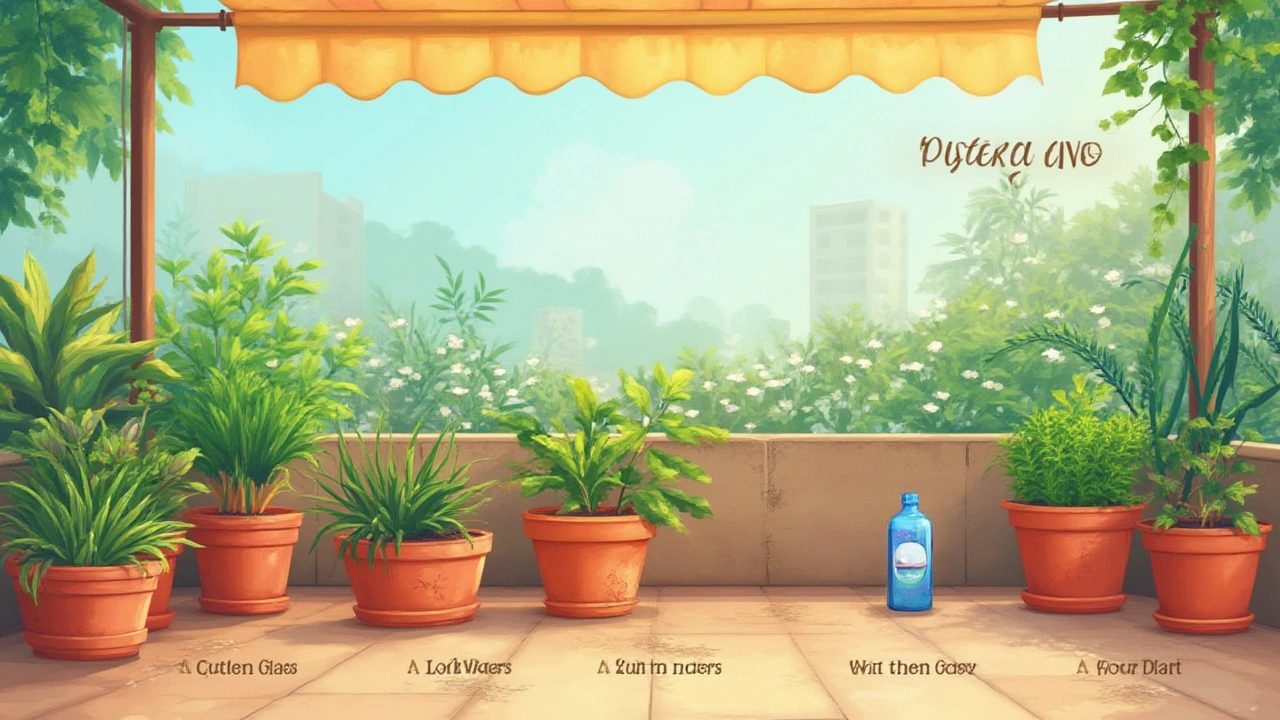
Practical Tips for Watering Plants with Tap Water
So what’s the game plan for folks who just want happy plants without a science degree? Make things easy on yourself. Use the following steps as your basic guide to tap water use:
- Fill up your watering can or a few jugs the night before you plan to water. Leave them open, in a spot away from pets or sunlight (sun can cause algae growth in standing water).
- If you have super fussy plants or you know your tap water has chloramine, invest in a fish tank water conditioner. Most cost less than a coffee at your local shop and last for months of watering.
- Flush out your pots with lots of water every couple of months to sweep away salt and mineral junk hiding in the soil. Let the pot drain completely so the roots don’t drown.
- Watch your plants, not just the calendar. If you see tip burn or strange growth, scale back on tap water or mix in some filtered or distilled when possible.
- On a budget? Diluting tap water with rainwater or melted snow (assuming clean collection) cuts the risk for sensitive plants, and every little bit helps.
And if you want one more reason to be cautious: some famous public gardens, like those at Kew in London or Longwood in Pennsylvania, use nothing but rainwater or meticulously filtered water for rare plants. That kind of pampering isn’t necessary for most home growers, but it says a lot about how water quality matters in the long run.
There you have it. Letting tap water sit is a simple, nearly free habit that helps most indoor plants, especially if you live in a city with chlorinated water. But if your city uses chloramine, or you’re battling hard water, you’ll need extra steps—like filters or a splash of distilled—to really give your greenery a break. Your plants notice the little things, and sometimes, that glass of water on the counter makes all the difference.
